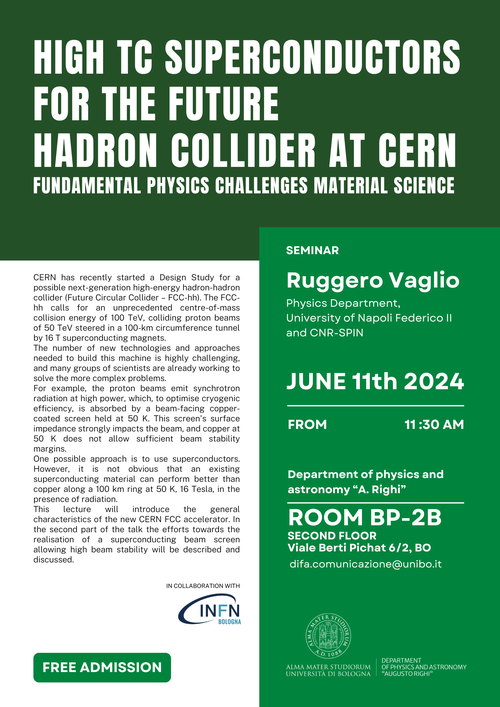Abstract
CERN has recently started a Design Study for a possible next-generation high-energy hadron-hadron collider (Future Circular Collider – FCC-hh). The FCC-hh calls for an unprecedented centre-of-mass collision energy of 100 TeV, colliding proton beams of 50 TeV steered in a 100-km circumference tunnel by 16 T superconducting magnets.
The number of new technologies and approaches needed to build this machine is highly challenging, and many groups of scientists are already working to solve the more complex problems.
For example, the proton beams emit synchrotron radiation at high power, which, to optimise cryogenic efficiency, is absorbed by a beam-facing copper-coated screen held at 50 K. This screen's surface impedance strongly impacts the beam, and copper at 50 K does not allow sufficient beam stability margins.
One possible approach is to use superconductors. However, it is not obvious that an existing superconducting material can perform better than copper along a 100 km ring at 50 K, 16 Tesla, in the presence of radiation.
This lecture will introduce the general characteristics of the new CERN FCC accelerator. In the second part of the talk the efforts towards the realisation of a superconducting beam screen allowing high beam stability will be described and discussed.
